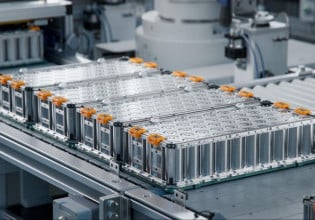2008 CES Wraps Up; Exclusive Video News Coverage Available Monday
The 2008 Consumer Electronics Show (CES) in Las Vegas concluded this week, and the editor of PowerPulse.Net was in attendance, videotaping news features (which will be available for viewing starting on Monday) that highlight some of the more interesting products and technologies exhibited at the show. The editor was also keeping a finger on the "pulse" of other developments at the show as well.
There were several companies that typified the CES organizers’ promise to present a show focused on "green" products and technologies. A particularly interesting example of the green focus could be seen in several of the developments on the fuel cell front (also check-out the Horizon Fuel Cell/Millennium Cell segment in next week’s video coverage) – a truly emerging technology in the context of the heavily entertainment-focused atmosphere that tends to dominate at CES.
Angstrom Power Inc. announced that it has developed a technology that it claims offers twice the run-time of batteries and with recharge times on the order of 10 minutes. Angstrom claims that its EverOn™ capability promises to supplant the lithium ion batteries commonly used in today’s portable electronic devices.
Completing a six-month test of fully integrated fuel cell-powered mobile devices, the power platform was successfully integrated into MOTOSLVR™ L7 handsets for the trial, with no modification to the outside dimensions of the devices. The trial devices did not rely on the use of any battery – instead, they drew power from Angstrom’s Micro Hydrogen™ platform, which is comprised of a novel fuel cell architecture, micro-fluidics and a refillable hydrogen storage tank.
General Motors (GM) Chairman Rick Wagoner used the show to introduce the Cadillac Provoq (pronounced "provoke") crossover vehicle that will run on batteries and hydrogen and emit nothing other than water vapor. Wagoner’s speech was the first keynote by an automaker in the 41 years of CES and also the first new car rollout.
GM claims the Provoq could be on the market in three to four years. GM is developing two critical components, the lithium-ion battery pack and the hydrogen fuel cell, in parallel with the rest of the car. Wagoner sees a zero emissions vehicle as critical in light of increasing vehicle sales and increasing energy consumption. Wagoner said the vehicle will have a top speed of 100mph , a 0-60 mph acceleration time of 8.2 seconds, and a range of 300 miles.
Toshiba was quietly exhibiting a fuel cell-powered media player. Labeled the DMFC built-in portable media player, the device was just a prototype for technology demonstration purposes. Inside the 8.8 ounce player is a small chamber which holds liquid methanol. The fuel cell mechanism converts this substance into usable electricity with the byproduct being water. The device can run for about 10 hours continuously before having to be refilled. Interestingly, the player is filled up directly with a squeeze bottle, and draws methanol only when electricity is required.
In terms of general energy efficiency, there were also interesting presentations in the fields of communications, mobile device, and computing power management.
Freescale Semiconductor unveiled that it is developing a high-performance audio and power management solution for Intel-based Mobile Internet Devices (MIDs). The highly integrated chip set is designed to efficiently manage power, enabling smaller form factors and longer battery life.
The audio and power management chip set is planned to be manufactured on Freescale’s advanced SMARTMOS™ technology, a high-voltage CMOS-based process that enables high integration of precision analog, power devices and logic. When paired with Intel’s low-power processors and chip sets, the forthcoming power management chip set is expected to provide an energy-efficient processing solution for a range of Mobile Internet Devices.
Microsemi Corp. demonstrated what it described as the first Power over Ethernet midspan unit designed with Power-Line Communication (PLC) capability. Designated the PD-7001G/PLC, Microsemi’s new 1-port PowerDsine® high power midspan was developed together with Panasonic’s HD-PLC technology to enable high power devices such as WLAN Access Points, IP and PTZ security cameras, VoIP and video phones, WiMAX and Thin Clients to connect on a PLC network.
According to Microsemi, by using PoE, the network user eliminates the power-supply and power cables to end devices, eliminating the cost needed to install additional ac outlets while using a safe low voltage (up to 57V) supply to the end devices.
More common was the announcement by Hewlett-Packard(HP), which revealed a general corporate strategy rather than a new, ready-to-go product. HP announced that it is committed to reduce the energy consumption of its volume desktop and notebook PC families by 25% by 2010. HP expects to reach its 2010 energy reduction goal through a variety of strategies, including integrating such components as more efficient power supplies and lower-energy chipsets and other energy-saving technologies and processes across its volume PC portfolio. One of the features the company claims will help reduce power usage across the HP business desktop line are the optional 80 PLUS® power supplies, which are up to 15% more efficient than standard power supplies.






